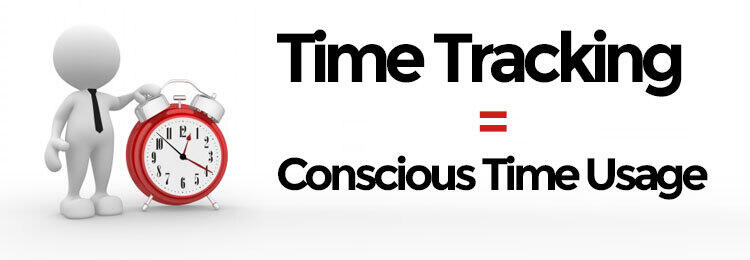
I obsessively track my time. I track my time in order to be aware of the task I am doing at that time.
It’s not about knowing where my time goes, though that’s an awesome side effect.
For me time tracking is being conscious of my time; being mindful of what I am doing at a certain moment.
The conscious act of setting a task and starting the timer frames my usage of the subsequent time.
By timing a task, I am aware of my time.
How I Track My Time:
There are some amazing time tracking tools out there. For me, the core of my time tracking are two tools: RescueTime and Toggl.
RescueTime passively tracks my computer usage and then generates some insightful reports. This provides a broad understanding of my time and my productivity.
Here is what my computer time has looked like over the first half of 2015:
![]()
Toggl, on the otherhand, is all manual. You type in your task and project and then start the timer. A manual timer (like Toggl) requires your input.
If I am not inputing a task and starting the timer, in general I am not on task. I am watching videos, listening to music or something else. I am not being particularly productive.
Here is what my conscious time tracking has looked like:
![]()
I combine these two numbers to determine my weekly kickass time usage ratio. In essense, I divide my total computer time by my conscious time tracking.
By looking at my general computer usage in relationship to my conscious time tracking, I have a pretty good idea of how productive I was.
Here is what this has look like so far this year:
![]()
These reports are a pretty cool side effect of my time tracking obcession.
They also help me better correlate time, energy and productivity. There is a limit (or at least there is for me) to how much time I can put into work each week and remain productive. More time does not result in higher effeciency and creativity.
In fact the opposite. There are time-intense weeks where I am super busy. I am getting something technical launched. I am writing tons of emails and communication to get a project completed. Or I am frantically pushing to the last steps done on some new challenge. Being busy is unavoidable.
Weeks of high computer time come with costs for me. Subsequent weeks are almost inevitably less productive. I need time to recover.
Tracking Time is for Being Aware
![]()
When I started time tracking, it was a way to better invoice my clients on consulting jobs. Timers like Toggl made it easy to work on projects and tasks and then generate the required invoices.
Eventually I started tracking everything. For a couple weeks I did my best to track nearly every second of everyday. The results were interesting, especially the amount of time that went into timer tracking.
In the end, the key takeway was my awareness of my time.
To complete any complicated and difficult project or task, you need to put in regular time on it. Herculean sprints might push the boulder. But regular, consistent work on a project will always triump.
Activity and time tracking are my conscious act of saying, “I am working on this…” and not on the thousands of other tasks I could work on. I don’t pick up my phone or check my email while I am “on-task;” I work.
It’s easy to get distracted and off task today. Technology has opened the door to distraction-filled lives. Notifications come from all angles and avoiding the pull of the next shinny thing is important to staying productive.
By putting our mind on task, we gain focus. With focus comes higher levels of productivity and creativity. You can’t manage highly complicated projects if you can only focus for a few minutes.
Time tracking is my secret weapon for being aware and staying on-task. I set the time and I get to work. Once I’ve done a task to its appropriate end, I stop the time. (Sometimes I even throw in a bit of pomodoro time boxing.)
By timing an activity, I force myself to focus on that task. By tracking, I am in my most productive moments. I am on task in time.
